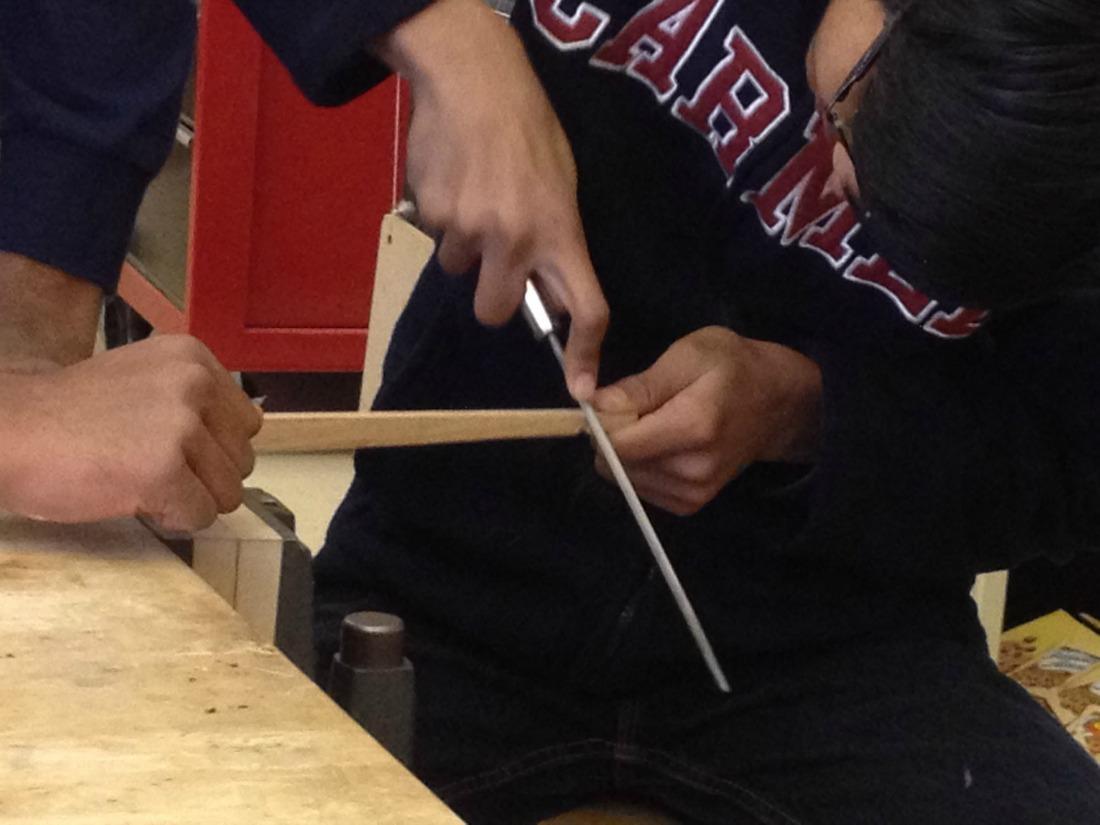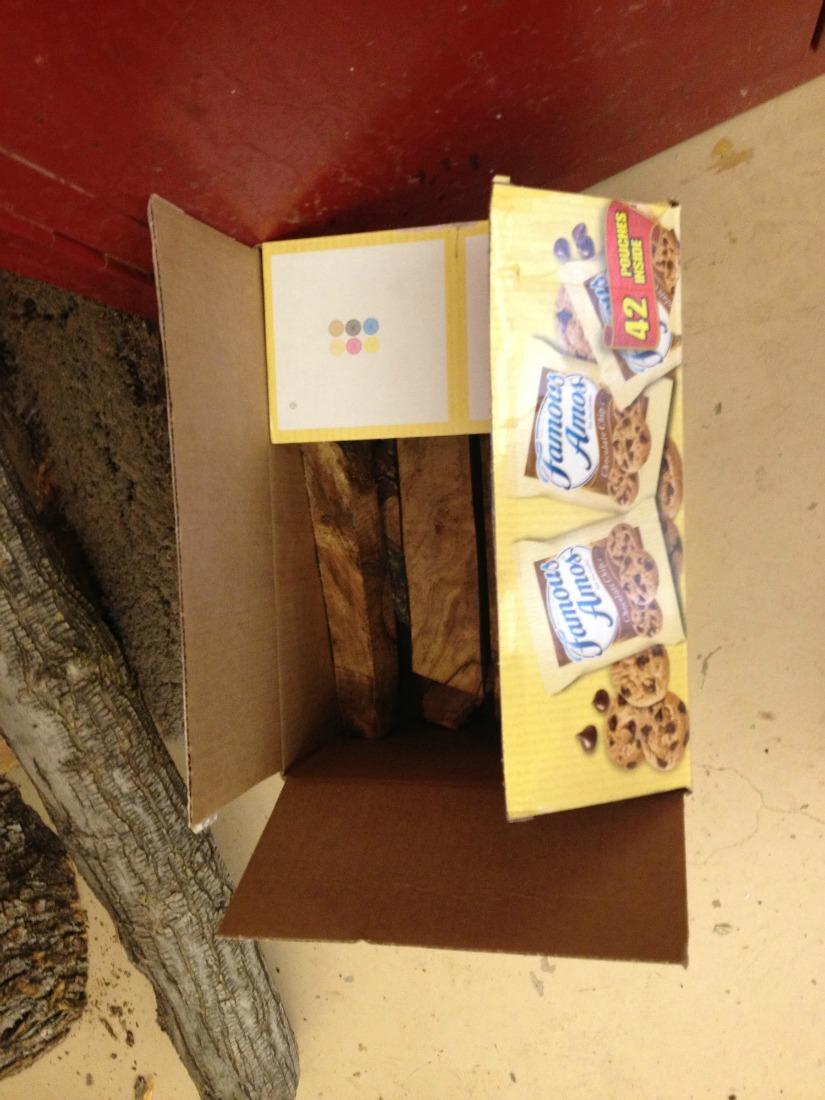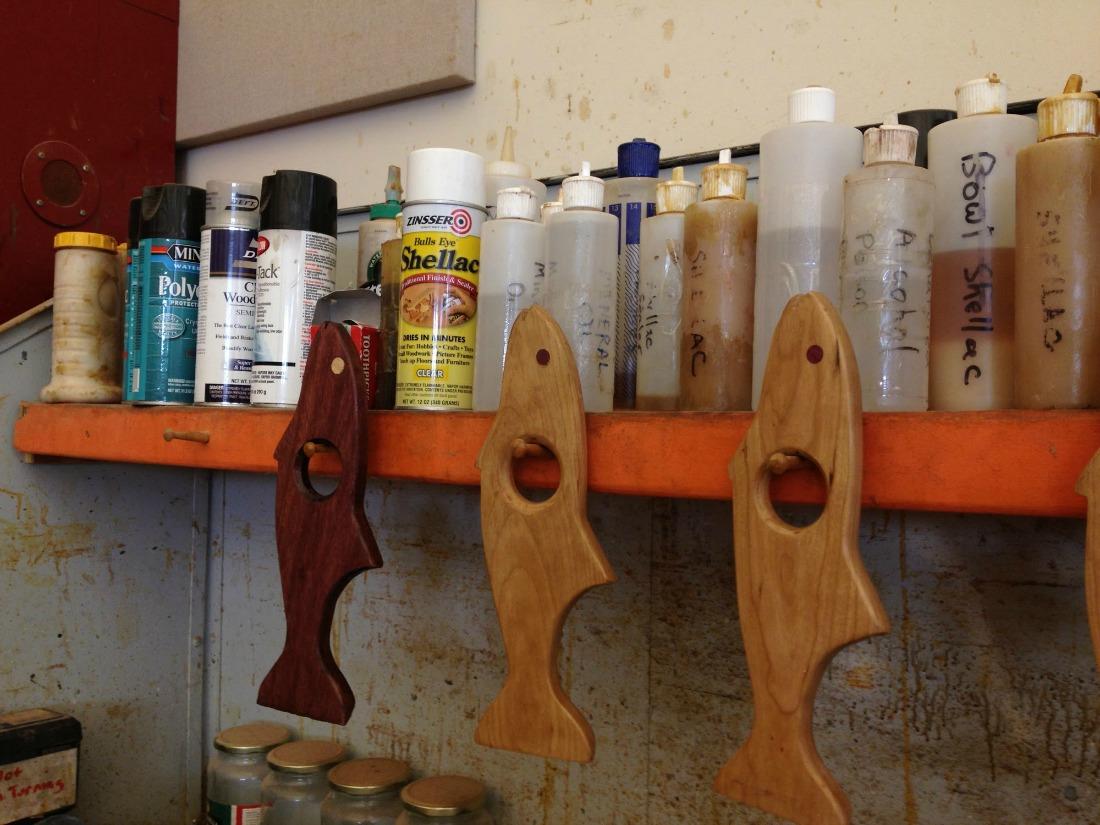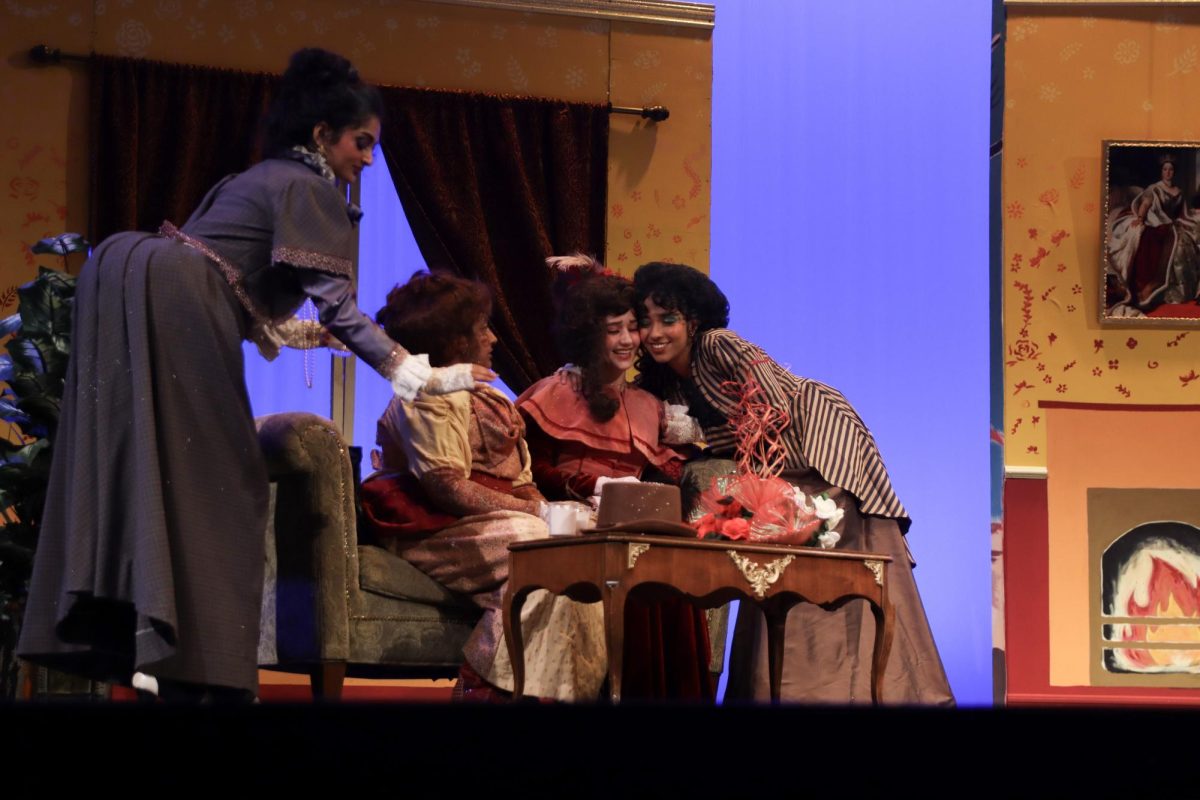


[dropcap1]”You[/dropcap1] don’t put a box of granola bars in a classroom full of guys,” woodshop teacher Ted Shinta said. “Because then you will find the box empty pretty soon.”
Shinta and some woodshop students sat around a table at lunch on Nov. 6 in the woodshop room sharing stories, food and stories about food in the midst of the cables and wires and heavy machines. Shinta recalled the time he put 48 granola bars inside the classroom and left the room. When he came back a few minutes later, they were all gone.
“That’s why I feed my drafting class everyday, but not you guys,” Shinta said.
The students exploded into laughter. Here, there were no conversations about grades, classes or the SATs — only discussions about atypical MVHS topics in an atypical setting. Pieces of raw wood materials were piled in one corner and paint-blotted machines occupied most of the space in the room. Pictures of past students lined the walls. An entire cupboard was filled with student products from the past, still kept in a decent state. In the honey-colored woodshop room, nooks and crannies have been preserved in the winding rings of wood pieces. Time seemed to go slower here.

The machines were rolling, wood dust was flying, but the work was not accelerating.
During tutorial the next day, Shinta stood next to a cutting machine helping senior Irene Fang angle the wood pieces. She was creating a picture frame. Shinta helped her guide the wood pieces through the rolling blades then placed the finished rectangular pieces on a smooth piece of plastic. Fang grabbed a plastic bottle of glue, squeezed some onto her fingers and smeared the white liquid onto the pieces. Then she lined them up into the shape of a frame. Shinta handed her a clamp to keep the pieces in place. She turned the handle of the clamp slowly, as if trying to feel the power of each twist.
“She is learning,” Shinta said. “It may seem easy to turn [the handle of] a clamp, but many people actually don’t know which way to turn.”
Gathered at another table in the room were sophomores Alexander Pereverzev and Akarshak Jaiswal working on their bows. Jaiswal was using a metal rod to grind out the dent where the strings were supposed to go. Besides, no strings would ever be clasped onto the bow because it was against school rules to possess weapons. When asked why they made the bows even if they could not use them, the guys shrugged and responded light-heartedly that it was fun, perfectly fine with the fact that they had been working on the bows for about a month.
“We will finish in two weeks,” Jaiswal said.
“No, we will finish next year,” Pereverzev said.
He gave Jaiswal a shove, who stopped grinding the bows to chat now and then.
“Work harder,” he said.
Jaiswal sped up, sending little fireworks of wood dust into the air — but he went too far: the dent was too deep.
“Oh shoot,” he said apologetically. Then he resumed grinding the bows, more cautiously this time. Speeding up did not work well in woodshop unlike in the other parts of campus.
On the other end of the room, Fang had finished tightening the clamps on the photo frame. Shinta adjusted the handles one more time to make sure they were screwed tight.
“Okay, now we just have to wait,” he said.
He put the glue back onto the supplies shelf. Hanging on the supplies shelf were three wooden fish. According to Shinta, they were all made by students from previous years.
“[The students] never took them back,” he said. “So I put them here just in case they will want them someday.”
The bell rang. Pereverzev and Jaiswal lined their bows in a corner so that they could work on them again during fourth period, joking about working harder next time; Fang took a final look at her picture frame and left quietly; students from third period streamed into the room. Time passes, but in the honey-colored woodshop room, it seems to go slower.






















